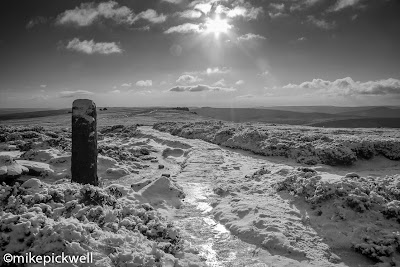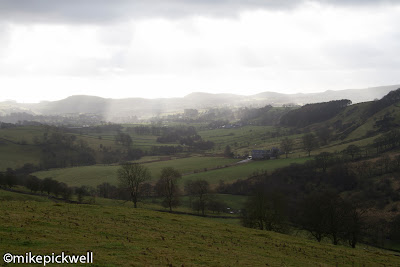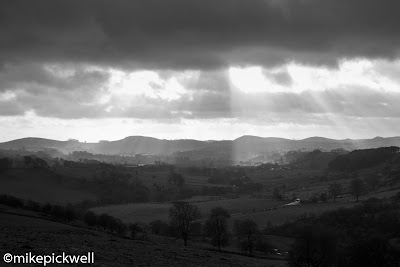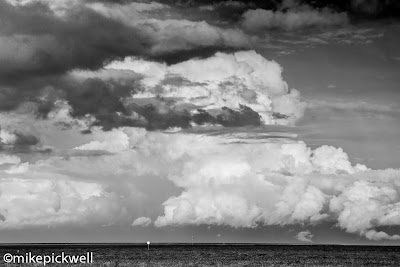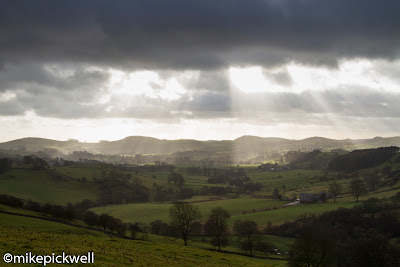The idea in this project is to look at the work of a few photographers and analyse their style writing about in around 100 words. I have decided to begin with Robert Adams. When I was researching photographers for Assignment 4 as his style of photography was not one I warmed to. Have I changed my mind?
Robert Adams.
He is best known for images that show how man's influence and the urban landscape encroaches on nature in the American West. He portrays the banal and often ugly, whilst at the same time providing hope that nature will persist and be more powerful than human influence. This reminds me of the work of Jitka Hanzlova whose photographs of Essen depict nature's reclamation of a western industrialised city. Adam's style can be rather random (in the same way that I think William Eggleston's point and shoot approach can). It can look emotionally distanced and even ugly. He often uses cloudless skies which echo the typically blank skies of the early photographers of the American West who were part of the survey teams. This was a product of the wet-plate colloidon process used in the production of their images. Robert Adams seeks out the ordinary and banal and portrays the world as it is unlike his namesake Ansel who sought out the extraordinary and portrayed the world as always beautiful and a cliche.
 |
| Mobile Home Park, Colorado. On the edge of dramatic landscapes Adams chose to photograph this 'ugly' view and the girl having to live there. The sky is blank, presumably blue. Perhaps in time nature will reclaim its own. |
Fay Godwin
Fay Godwin's work is in black and white and is characterized by her portrayal of the unremarkable and 'gentle' British countryside using both 35mm and medium formats. She is not afraid to portray 'ugly' man-made intrusions such as in her Pillbox Appledore, featured in her book 'Land'. She does, however, unlike some other photographers manage to make them look beautiful.
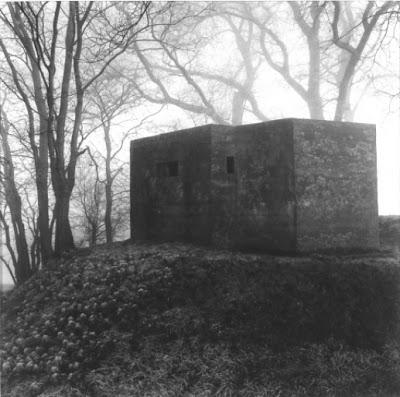 |
| Pillbox, Appledore |
She was also a keen hillwalker and was president of the Ramblers Assosiation from 1987-1990 and another aspect of her style was her photographs of the wilderness areas of Britain often moody and in poor weather conditions. She also portrayed archaological evidence of man and I especially like Black Sky at Callanish shown below and in her book 'Land'.
 |
| Black Sky, Callanish |
She often worked closely with writers and poets who were drawn to her work. One such is John Fowles who wrote an essay introduction to 'Land'
Like Ansel Adams she was a confirmed environmentalist and conservationist and was appalled by the ravages that man has perpetrated on our landscape. Unlike Adams, however, she included such ravages in her photographs. From the 1970s she increasingly photographed such subjects as rotting cars lying in lagoons, a hawk hovering threateningly over a bunker on Dover cliffs, sheep lining up to stare over a military canal, shacks and caravans littering the countryside, pill boxes marching along the beach. Her book 'Forbidden Land' (published September 1990) is a well-argued attack on the destruction of the countryside.
Eliot Porter
Eliot Porter is widely regarded as the forefather of colour landscape photography. As well as specializing in colour, he also used large format and spend a great deal of time getting colour film to produce the range of tones he needed. He had a passion for birds and photographed them all his life. This is enough of a challenge with today's digital bodies and long, fast lenses never mind with large format. He specialized in biological images and close landscapes, often in great detail and with no sky. He was another committed environmentalist. Although he became the first established artist-photographer to commit to exploring the
colorful beauty and diversity of the natural world, he was not widely recognized until the Sierra Club published 'In Wilderness Is The Preservation of the World' which contained many of his trademark detailed close-up landscapes. This style continued with 'Intimate Landscapes' in 1980. One of my favourite images is
Sculptured Rock taken in Marble Canyon, Arizona in 1967.
 |
| Sculptured Rock, Marble Canyon, Arizona, 1967 |
I decided to finish with a current British Landscape photographer and a personal favourite:
Joe Cornish
Joe Cornish is a British photographer who specializes in working with large format ( Ebony 45SU handmade 5x4 non-folding wooden field camera) and film ( Fujichrome Velvia). His style is one of spectacular British Landscapes often taken in dramatic lighting. Like Galen Rowell his images are well saturated and skies are balanced using the Lee ND grad filters. Although he doesn't run around trying to get lots of shots, unlike Ansel Adams, he is not afraid to take more than one exposure and will bracket shots to ensure correct rendering of light and colour. Although he can be spontaneous, like Adams he is a planner and visualizes his photographs. Light is his main criterion for a powerful image followed by composition and space. In fact his book published in 2002 is called 'First Light'.
 |
| Bambugh Castle. A typical use of dramitc light on a spectacular landscape. |









